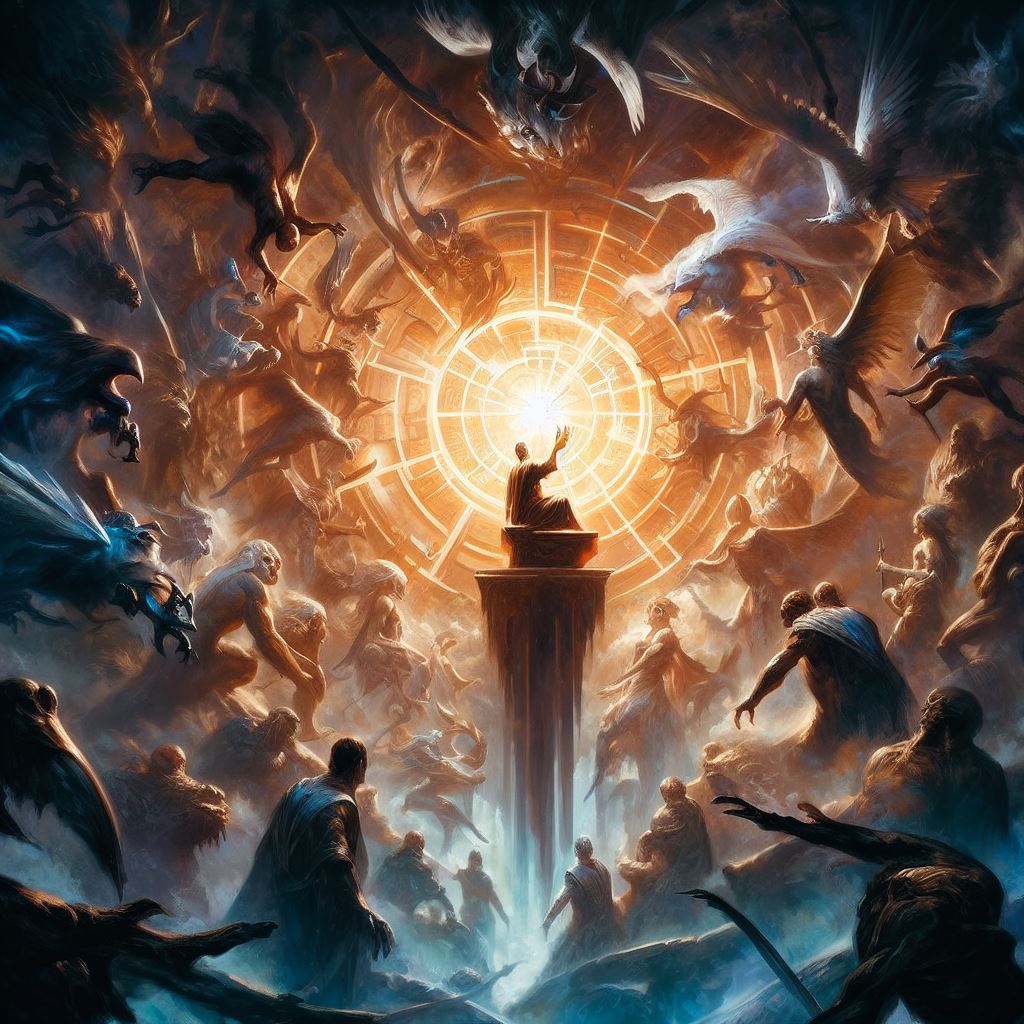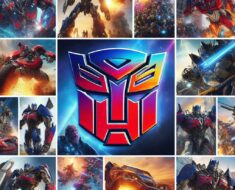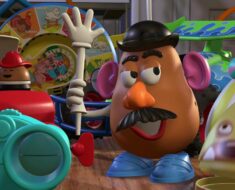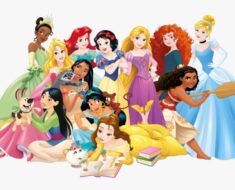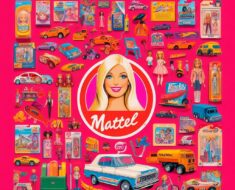Magic: The Gathering (MTG) is a tabletop and digital collectible card game created by Richard Garfield and published by Wizards of the Coast (WOTC). Since its debut in 1993, MTG has become one of the most popular and influential games in the world, with over 35 million players and 20 billion cards produced as of 2018. MTG is also known for its rich and immersive story, spanning multiple worlds and characters across the Multiverse.
History
MTG was conceived by Richard Garfield, a mathematician and game designer, who pitched his idea of a customizable card game to WOTC in 1991. WOTC, a small company founded by Peter Adkison, was looking for a game that was portable, easy to play, and appealing to a wide audience. Garfield’s game, originally called Mana Clash, met these criteria and was accepted for production.
The first set of MTG, called Alpha, was released in August 1993, with a limited print run of 2.6 million cards. The set introduced the basic rules and mechanics of the game, as well as the concept of the five colors of magic: white, blue, black, red, and green. The set also featured some of the most iconic and powerful cards in the game’s history, such as Black Lotus, Ancestral Recall, and Moxen.
The success of Alpha led to the release of two more sets, Beta and Unlimited, which expanded and revised the card pool. In 1994, the first expansion sets were released, Arabian Nights and Antiquities, which introduced new themes, mechanics, and story elements. The game also began to attract a competitive scene, with the first Pro Tour held in 1996.
Over the years, MTG has continued to evolve and innovate, releasing new sets and formats that cater to different types of players and preferences. Some of the most notable sets and formats include:
- Revised Edition (1994): The third core set, which fixed many errors and balance issues from the previous sets, and introduced the modern card frame and symbol.
- Ice Age (1995): The first set in the Ice Age block, which was the first block to have a cohesive story and setting. The set also introduced snow-covered lands and cumulative upkeep.
- Mirage (1996): The first set in the Mirage block, which was the first block to be designed as a block, rather than as individual sets. The set also introduced the concept of cycles, such as the charms and the fetch lands
- Urza’s Saga (1998): The first set in the Urza block, which was one of the most powerful and controversial blocks in the game’s history. The set featured cards that enabled fast mana, card draw, and combo decks, such as Tolarian Academy, Yawgmoth’s Will, and Tinker. The set also advanced the story of Urza, one of the most prominent characters in the game’s lore
- Invasion (2000): The first set in the Invasion block, which was the first block to focus on multicolor cards and interactions. The set also marked the culmination of the Weatherlight Saga, a decade-long story arc that spanned multiple sets and planes
- Mirrodin (2003): The first set in the Mirrodin block, which was the first block to take place on a new plane other than Dominaria, the original setting of the game. The set also introduced the artifact theme and the equipment subtype
- Ravnica: City of Guilds (2005): The first set in the Ravnica block, which was the first block to feature the guilds of Ravnica, a city-plane divided into ten factions, each representing a two-color combination. The set also introduced the hybrid mana and the legendary creature subtype
- Time Spiral (2006): The first set in the Time Spiral block, which was the first block to explore the concept of time and alternate realities. The set also featured many cards that referenced or reprinted previous cards from the game’s history, as well as new mechanics such as suspend, split second, and flashback
- Lorwyn (2007): The first set in the Lorwyn-Shadowmoor block, which was the first block to have two distinct settings and themes within the same block. The set also introduced the tribal theme and the planeswalker card type, which represented powerful characters that could travel between planes
- Zendikar (2009): The first set in the Zendikar block, which was the first block to feature the land theme and the adventure setting. The set also introduced the full-art basic lands and the landfall mechanic
- Scars of Mirrodin (2010): The first set in the Scars of Mirrodin block, which was the first block to return to a previous plane and continue its story. The set also featured the Phyrexian invasion of Mirrodin and the infect mechanic
- Innistrad (2011): The first set in the Innistrad block, which was the first block to feature the horror theme and the Gothic setting. The set also introduced the transform mechanic and the double-faced cards
- Return to Ravnica (2012): The first set in the Return to Ravnica block, which was the first block to revisit a previous plane and its guilds. The set also introduced the shock lands and the overload mechanic
- Theros (2013): The first set in the Theros block, which was the first block to feature the Greek mythology theme and the enchantment theme. The set also introduced the devotion mechanic and the god subtype
- Khans of Tarkir (2014): The first set in the Khans of Tarkir block, which was the first block to feature the wedge theme and the Mongolian setting. The set also introduced the fetch lands and the morph mechanic
- Battle for Zendikar (2015): The first set in the Battle for Zendikar block, which was the first block to feature the Eldrazi theme and the war setting. The set also introduced the full-art basic lands and the expedition cards
- Shadows over Innistrad (2016): The first set in the Shadows over Innistrad block, which was the first block to return to a previous plane and its horror theme. The set also featured the madness of Innistrad and the investigate mechanic
- Kaladesh (2016): The first set in the Kaladesh block, which was the first block to feature the artifact theme and the Indian setting. The set also introduced the energy mechanic and the vehicle subtype
- Amonkhet (2017): The first set in the Amonkhet block, which was the first block to feature the Egyptian theme and the desert setting. The set also introduced the exert mechanic and the aftermath cards
- Ixalan (2017): The first set in the Ixalan block, which was the first block to feature the dinosaur theme and the Mesoamerican setting. The set also introduced the explore mechanic and the treasure tokens
- Dominaria (2018): The first set in the Dominaria block, which was the first block to return to the original plane and its history. The set also featured the saga cards and the historic mechanic
- Guilds of Ravnica (2018): The first set in the Guilds of Ravnica block, which was the first block to revisit the guilds of Ravnica for the third time. The set also introduced the shock lands and the surveil mechanic
- War of the Spark (2019): The first set in the War of the Spark block, which was the first block to feature the planeswalker theme and the culmination of the Nicol Bolas arc. The set also featured 36 planeswalkers and the amass mechanic
- Throne of Eldraine (2019): The first set in the Throne of Eldraine block, which was the first block to feature the fairy tale theme and the Arthurian setting. The set also introduced the adventure mechanic and the food tokens
- Theros Beyond Death (2020): The first set in the Theros Beyond Death block, which was the first block to return to the Greek mythology theme and the underworld setting. The set also featured the escape mechanic and the constellation cards.
- Ikoria: Lair of Behemoths (2020): The first set in the Ikoria: Lair of Behemoths block, which was the first block to feature the monster theme and the kaiju setting. The set also introduced the mutate mechanic and the companion cards.
- Zendikar Rising (2020): The first set in the Zendikar Rising block, which was the first block to return to the land theme and the adventure setting. The set also featured the full-art basic lands and the modal double-faced cards.
- Kaldheim (2021): The first set in the Kaldheim block, which was the first block to feature the Norse mythology theme and the snow theme. The set also introduced the boast mechanic and the saga cards.
- Strixhaven: School of Mages (2021): The first set in the Strixhaven: School of Mages block, which was the first block to feature the magic school theme and the academic setting. The set also introduced the learn mechanic and the lesson cards.
- Adventures in the Forgotten Realms (2021): The first set in the Adventures in the Forgotten Realms block, which was the first block to feature the Dungeons & Dragons theme and the crossover setting. The set also introduced the dungeon mechanic and the venture cards.
- Innistrad: Midnight Hunt (2021): The first set in the Innistrad: Midnight Hunt block, which was the first block to return to the horror theme and the werewolf theme. The set also introduced the day/night mechanic and the disturb cards.
- Innistrad: Crimson Vow (2021): The second set in the Innistrad: Midnight Hunt block, which was the first block to feature the vampire theme and the wedding theme. The set also introduced the blood mechanic and the blood token cards.
- Kamigawa: Neon Dynasty (2022): The first set in the Kamigawa: Neon Dynasty block, which was the first block to return to the Japanese theme and the cyberpunk theme. The set also introduced the cipher mechanic and the hacker cards.
- Dominaria United (2022): The second set in the Kamigawa: Neon Dynasty block, which was the first block to feature the time travel theme and the alternate history theme. The set also introduced the chronicle mechanic and the timeline cards.
- The Brothers’ War (2022): The third set in the Kamigawa: Neon Dynasty block, which was the first block to feature the artifact theme and the war theme. The set also introduced the forge mechanic and the relic cards.

Current
MTG is currently one of the most popular and successful games in the world, with a loyal and diverse fan base. The game is supported by various products and services, such as:
- Physical cards: The main product of the game, which are sold in booster packs, starter decks, collector sets, and other formats. The cards are also used for playing in various formats, such as Standard, Modern, Commander, Draft, and more.
- Digital games: The secondary product of the game, which are available on various platforms, such as PC, mobile, and console. The digital games include Magic: The Gathering Online, Magic: The Gathering Arena, Magic: Legends, and more. The digital games offer different features and experiences, such as online play, single-player modes, card collections, and more.
- Merchandise: The tertiary product of the game, which include various items and accessories, such as clothing, books, comics, art prints, figurines, and more. The merchandise are sold through various channels, such as online stores, conventions, and collaborations. The merchandise offer different ways to express and enjoy the game’s brand and culture.
- Events: The quaternary product of the game, which include various activities and competitions, such as tournaments, festivals, conventions, and more. The events are organized by various entities, such as WOTC, local game stores, fan communities, and more. The events offer different opportunities to interact and engage with the game’s players and creators.
Future
MTG is constantly evolving and expanding, with new sets and formats being released and developed every year. The game is also exploring new themes and settings, as well as new ways to deliver and play the game. Some of the future plans and projects of the game include:
- Universes Beyond: A new initiative that will feature MTG sets and products based on other intellectual properties, such as The Lord of the Rings, Warhammer 40,000, Fortnite, and more. The initiative will offer new and exciting experiences for both existing and new fans of the game.
- Netflix Series: A new animated series that will be produced by Netflix and WOTC, based on the story and characters of MTG. The series will be helmed by Joe and Anthony Russo, the directors of Avengers: Endgame, and will feature voice actors such as Brandon Routh, Sophia Lillis, and David Tennant. The series will offer a new and immersive way to explore and enjoy the game’s lore and world.
- Secret Lair: A new product line that will feature limited-edition and curated card sets, based on various themes and styles, such as artists, musicians, celebrities, and more. The product line will offer new and unique ways to collect and customize the game’s cards and decks.
- Jumpstart: A new format that will feature pre-constructed and randomized card packs, based on various themes and mechanics, such as cats, pirates, zombies, and more. The format will offer a new and easy way to play and learn the game’s rules and strategies.

Most Iconic Entertainment Moments
MTG has been a source of entertainment and inspiration for many people, both inside and outside the game. The game has also produced many memorable and iconic moments, both in the game and in the culture. Some of the most iconic entertainment moments of the game include:
- The Cheatyface Incident: A humorous and controversial moment that occurred in the 2004 World Championship, when Mark Rosewater, the head designer of the game, played a card called Cheatyface, which had the ability to sneak into play without paying its cost. The card was part of the Unhinged set, which was a parody and joke set that was not legal for tournament play. The incident caused a lot of laughter and debate among the players and the audience.
- The Black Lotus Auction: A historic and record-breaking moment that occurred in 2019, when a copy of Black Lotus, the most rare and valuable card in the game, was sold for $166,100 in an online auction. The card was graded as a 9.5 out of 10 by Professional Sports Authenticator, and was signed by the artist, Christopher Rush. The auction attracted a lot of attention and media coverage, and showcased the game’s popularity and value.
- The Fireball Play: A dramatic and epic moment that occurred in the 2010 World Championship, when Brian Kibler, one of the most famous and successful players in the game, won the final match against Guillaume Matignon, with a spectacular and unexpected play. Kibler used a card called Fireball, which dealt damage equal to the amount of mana spent, to deal 20 damage to his opponent, who had 19 life. The play was considered one of the best and most exciting plays in the game’s history, and was celebrated by the commentators and the crowd.
- The Magic Rap: A hilarious and creative moment that occurred in 2012, when Graham Stark and Kathleen De Vere, the hosts of the comedy and gaming show LoadingReadyRun, performed a rap song about the game, called The Magic Rap. The song featured witty and clever lyrics, catchy and upbeat music, and references and jokes about the game’s cards, mechanics, and culture. The song was well-received and praised by the fans and the creators of the game, and became a viral hit on the internet.
- The Eldrazi Invasion: A shocking and thrilling moment that occurred in 2016, when the Eldrazi, a race of cosmic and monstrous beings, invaded the plane of Zendikar, and threatened to destroy the Multiverse. The story was told through the cards and the lore of the game, and featured a massive and epic conflict between the Eldrazi and the planeswalkers, the heroes of the game. The story was also reflected in the gameplay and the meta, as the Eldrazi cards and decks dominated and disrupted the game’s formats and strategies. The story was considered one of the most ambitious and impactful stories in the game’s history, and was followed and enjoyed by millions of players and fans.
Business Story
MTG is not only a game, but also a business, and a very successful one at that. The game has generated billions of dollars in revenue and profit, and has created thousands of jobs and opportunities. The game has also faced many challenges and risks, and has overcome them with innovation and adaptation. The business story of the game can be summarized as follows:
- The Beginning: The game was created by Richard Garfield and published by WOTC, a small and independent company, in 1993. The game was initially funded by Peter Adkison, the founder and CEO of WOTC, who mortgaged his house to finance the production. The game was marketed and distributed through local game stores and hobby shops, and relied on word-of-mouth and grassroots promotion. The game was an instant hit, and sold out within weeks. The game also won many awards and accolades, such as the Origins Award and the Mensa Select Award.
- The Growth: The game expanded and diversified, releasing new sets and products, such as expansions, core sets, starter decks, and more. The game also developed and supported new formats and modes, such as Limited, Constructed, Multiplayer, and more. The game also grew and nurtured its fan base and community, organizing and hosting events and tournaments, such as Pro Tours, Grand Prix, and more. The game also created and licensed its intellectual property and brand, producing and collaborating on merchandise and media, such as books, comics, games, and more.
- The Decline: The game faced and suffered from many problems and issues, such as overproduction, power creep, counterfeiting, lawsuits, and more. The game also lost and alienated many players and fans, due to unpopular and controversial decisions and changes, such as the Reserved List, the New World Order, the Magic Origins reboot, and more. The game also struggled and competed with many rivals and threats, such as Pokemon, Yu-Gi-Oh, Hearthstone, and more. The game also experienced and endured many crises and scandals, such as the Great Designer Search, the Hall of Fame, the MPL, and more. The game also witnessed and mourned the departure and death of many of its creators and icons, such as Richard Garfield, Christopher Rush, Mark Rosewater, and more.
- The Revival: The game recovered and improved, releasing new and better sets and products, such as Modern Horizons, Commander Legends, Secret Lair, and more. The game also innovated and adapted, developing and launching new and different formats and modes, such as Pioneer, Historic, Brawl, and more. The game also reconnected and delighted its fan base and community, organizing and hosting new and exciting events and tournaments, such as Mythic Championships, Magic Fests, Command Fests, and more. The game also expanded and diversified its intellectual property and brand, producing and collaborating on new and diverse merchandise and media, such as Netflix Series, Universes Beyond, Magic Legends, and more. The game also reached and appealed to new and larger audiences and markets, such as China, India, Brazil, and more.
The game is currently in a state of flux and transition, with many opportunities and challenges ahead. The game is still alive and thriving, and has a bright and promising future.

